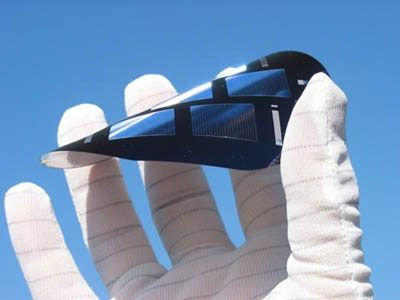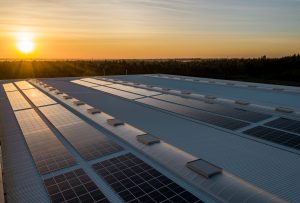Solar Photovoltaic System
Solar photovoltaic system directly obtain electricity from sunlight. The principle of operation is based on the famous photoelectric effect (sometimes called photo effect).

Photoelectric effect is a physical phenomena in which the action of electromagnetic radiation with a sufficiently small wavelength, as visible or ultraviolet light (the light is electromagnetic radiation) comes to the outbreak of electrons from the bright material (metal, semiconductor lately).
Photoelectric effect was first noted by Hertz in 1887 during an experiment. The Hertz observed that electrodes illuminated with ultraviolet light (UV) easier create sparks than those who are not illuminated. After that many researchers have dealt with this issue until 1905 when Einstein was able to fully explain this effect. Contrary to widespread opinion that Einstein received the Nobel Prize for his general theory of relativity, the truth is that he has ample Nobel Prize in 1921 precisely for this discovery. Studying the photo effect leads to important discoveries about the quantum nature of light and electrons, i.e. the idea of dual nature of waves and particles.
Solar photovoltaic cells
An integral part of every photovoltaic (solar panel) is a solar cell. Solar cells are photo-diodes that produce light under the action of light. Like any diode, photo-diodes basically represent p-n junction, where p denotes the layer of material which is dominated by positive particles, and n denotes the layer dominated by negative particles, electrons. Because of such positioning of the joint (material) when the light will break out electrons from the n layer, they are moving independently, without external electric source, thereby creating electricity.
Solar cells are very sensitive, therefore, while the construction of the panels (photovoltaic) they are connected tightly and heavily protected by glass.

Applications of photovoltaic are huge. They found their application in the construction of vehicles. So today there are huge number of inventive designs of electric cars powered solely by the sun, until recently were promoted and the first solar airplane and the first solar boat. Certainly, the most important role of photovoltaic is in the production of electricity for wide consumption. Perhaps the most ambitious project so far is the project Desertec. The idea is building a large network of photovoltaic power plants across the Sahara Desert in North Africa, with a total capacity of 100 GW, which according to estimates should provide about 15% of total energy needs of Europe.
Disadvantages
Initial investment is very high due to expensive production of solar cells. This means that without subsidies from the government, electricity generated at these plants would be expensive. Also solar cells produce direct current, which to be useful must be converted into AC. There are losses of 4-12%. Electricity is not produced at night and is reduced when production is cloudy or winter, because unlike systems with indirectly generated electricity, it’s necessary direct sunlight, but in recent time there is work on solar cells that operate in the range of infrared light.





